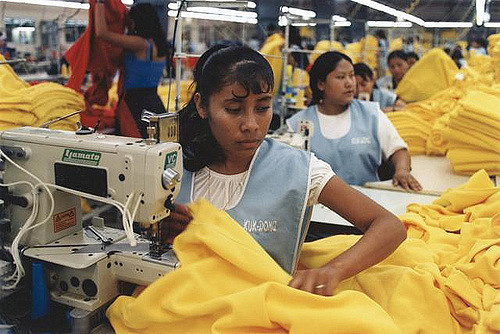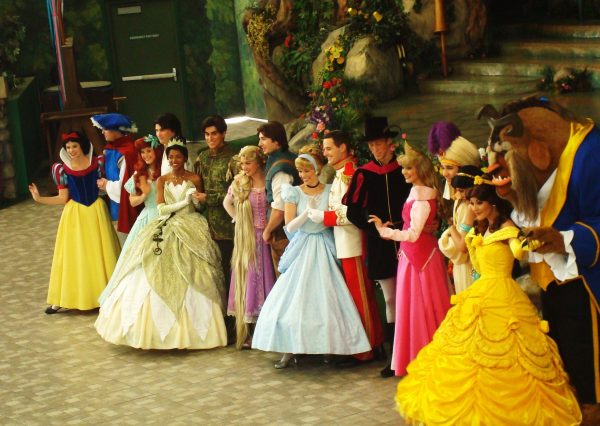Aspiring fashion designer comments on unethical manufacturing processes

Who makes your clothes? The answer is people working in sweatshops in developing countries. “Fast fashion” is the term for the detrimental cycle of production and consumption currently monopolizing our culture. H&M is a great example of this — we as consumers go to their store and buy a $6 shirt that we don’t even love, but hey, it was only $6. What we don’t realize is that cheap price translates exactly to the wages of the labor force in factories across the world.
Multiple things have contributed to the development of this new system, but it is mostly caused by the shift in the fashion industry from the normal two seasons to a continuous flow of designs, creating what seems like 52 seasons. This change has pushed retailers to abuse their labor forces more and more, giving them less and less time to finish orders. Along with that, the increased demand for cheap clothing has sent stores to factory owners that offer even lower prices to produce their product. All of this barely affects people in the supply chain, but comes down hard on the factory workers.
According to RTE, an Italian broadcasting company, the average sweatshop employee who works seven days a week for 17 hours a day is paid no more than $3 per day for all their time. Many people argue that in places like Bangladesh, this is better than many alternatives, but this is still nowhere near a living wage. Without money for child care, many women must send their children away to live with their families, and they only see them a few times throughout the year. That being said, this is better than the alternative, where the children are taken to work and introduced to numerous toxic chemicals in the factories. Or even being sent to the factories to become workers themselves once they’re old enough.
Money aside, the conditions in the factories are unacceptable. Workers suffer sexual harassment, little to no safety regulations on equipment and are inhaling toxic chemicals at alarming rates. And the name of “sweatshop” certainly comes from something — there is a complete lack of air circulation. So whether you believe they should be paid more or not, they at least deserve workable conditions.
There are many examples of this tragic process that go unnoticed, such as what’s known as the Rana Plaza building collapse that killed more than 1,000 garment workers in 2013. Just weeks before, the employees had complained about worrisome cracks in the building. In 2010, an H&M factory in Gazipur, Bangladesh had a fire that killed 21 and injured 45 more. The reason the casualties were so high was because the doors were bolted shut. Which is eerily similar to the 1911 shirtwaist factory fire in New York. This fire caused a public outcry, compelling people to actually take the protesting workers seriously and to change conditions for these workers. Something as comparable to what was considered a national tragedy in our history is treated as merely an inconvenience to such a major retail chain.
In 2014, in Cambodia, strikes occured after the factories refused to pay more than $140 a month. The anti-union government opened fire on the protesters, killing four and injuring another 20. This doesn’t include the many workers beaten and arrested while fighting for better working conditions and pay. These are a few illustrations of a systemic problem that plagues developing countries as globalization pushes them closer to collapse. And most people have no idea that it’s even happening.
The main problem is ignorance. Most people have no idea about these tragedies all around the world and go on to blindly consume cheap and poorly made clothing just because they don’t know better or because it’s “cheaper.” I was the exact same way until earlier last year when I watched The True Cost, and even then the idea of ethical shopping did not set in for a long time. But I realized that if I wanted to pursue fashion, this is something I need to help change.
So here’s what you can do to help lessen the impact of fast fashion on our world. Ethical shopping includes only purchasing from sweatshop-free brands and thrift stores. To me, the most important idea on this list is thrift shopping, because only 10 percent of the clothing donated actually gets purchased, and the rest is sent to developing countries, where it crushes the garment industry there, or landfills. And I haven’t even gotten into the environmental impact of fast fashion, like the fact that the average American throws away almost 80 pounds of clothing a year. Along with these it is also the cheapest option to be ethical, which is great for those on a budget. Overall, we need to stop supporting these huge retailers that abuse and take advantage of both labor forces and the environment. We need to realize how our actions affect the world in the larger scheme of things. And with determination we can change the direction that our culture is spiraling towards.





